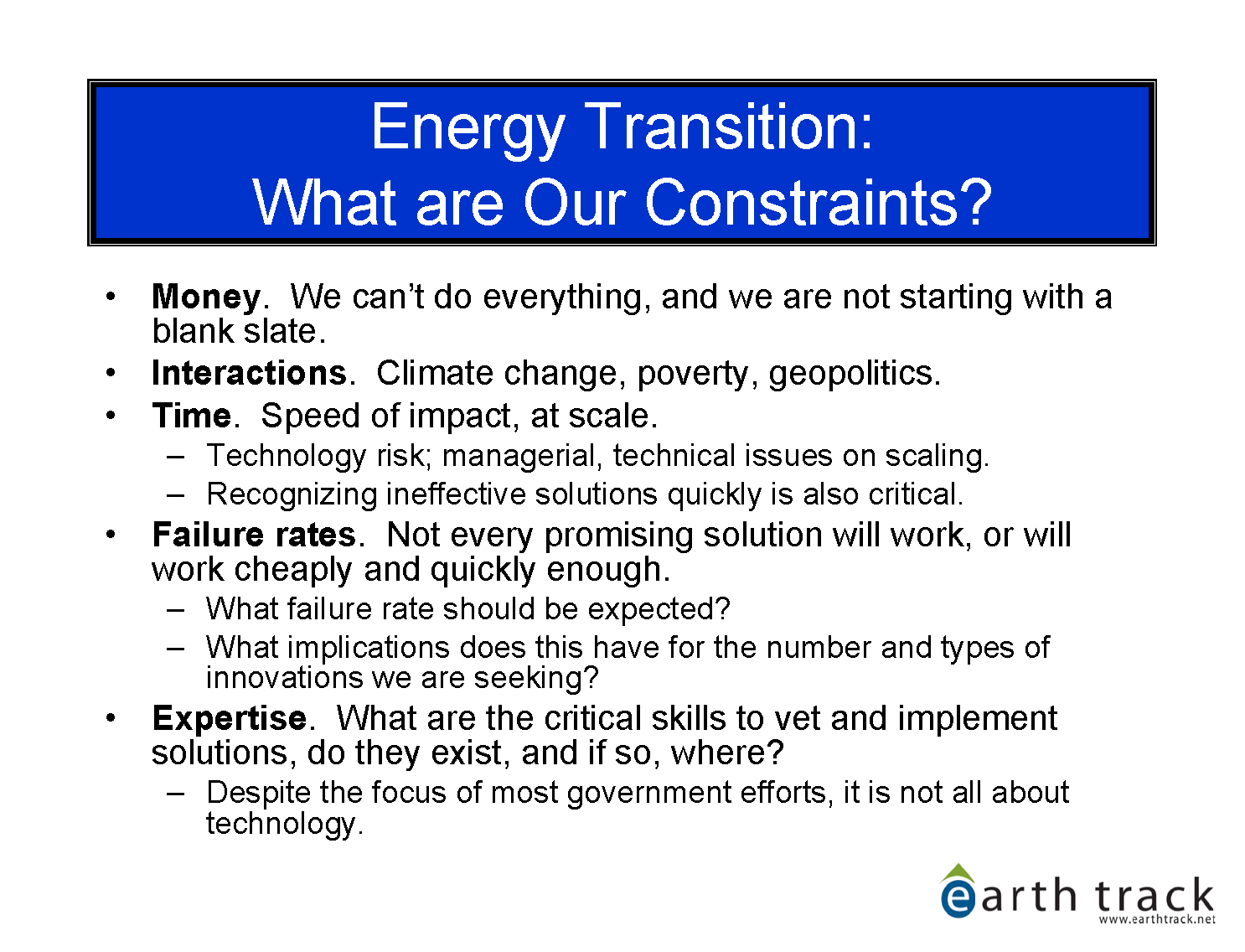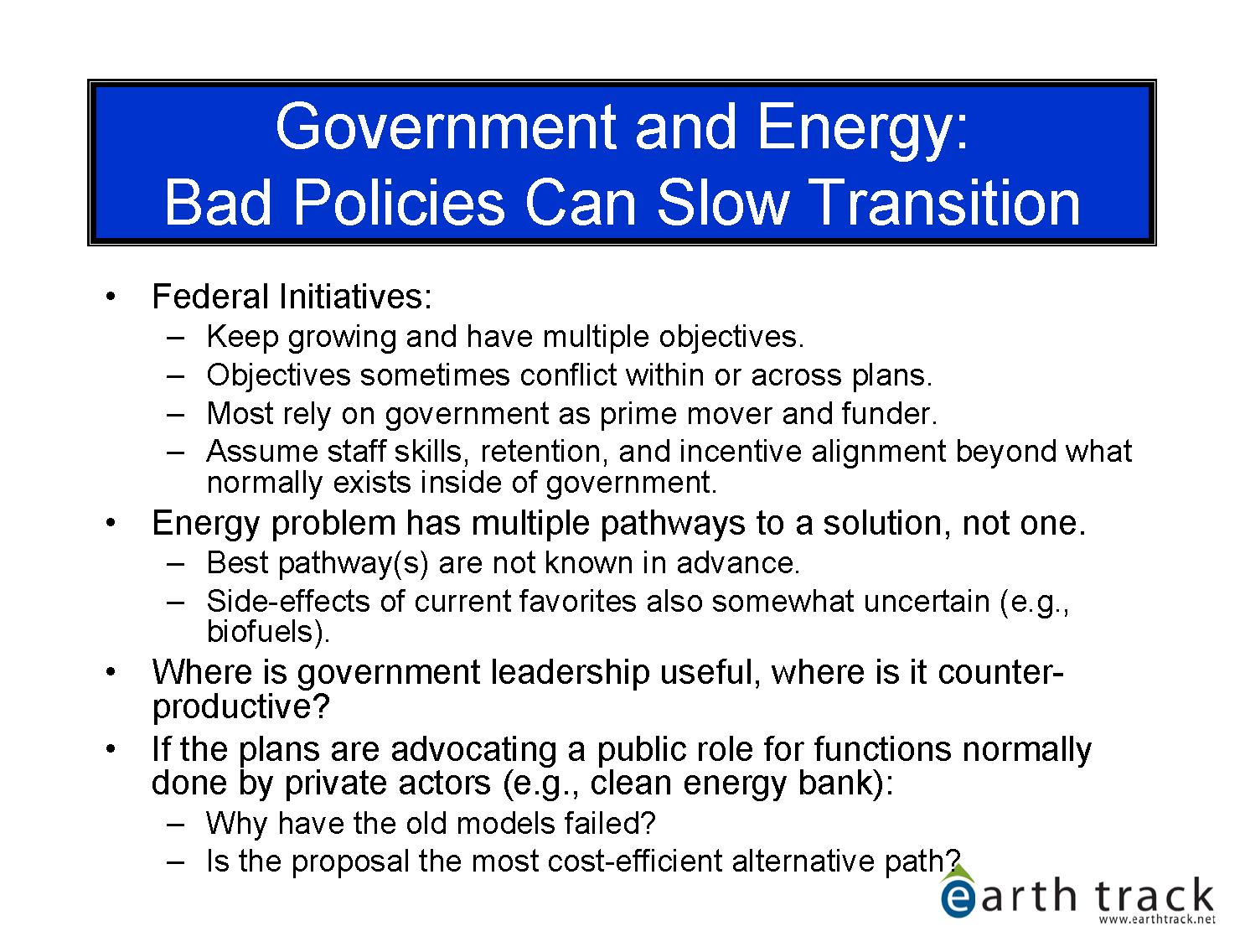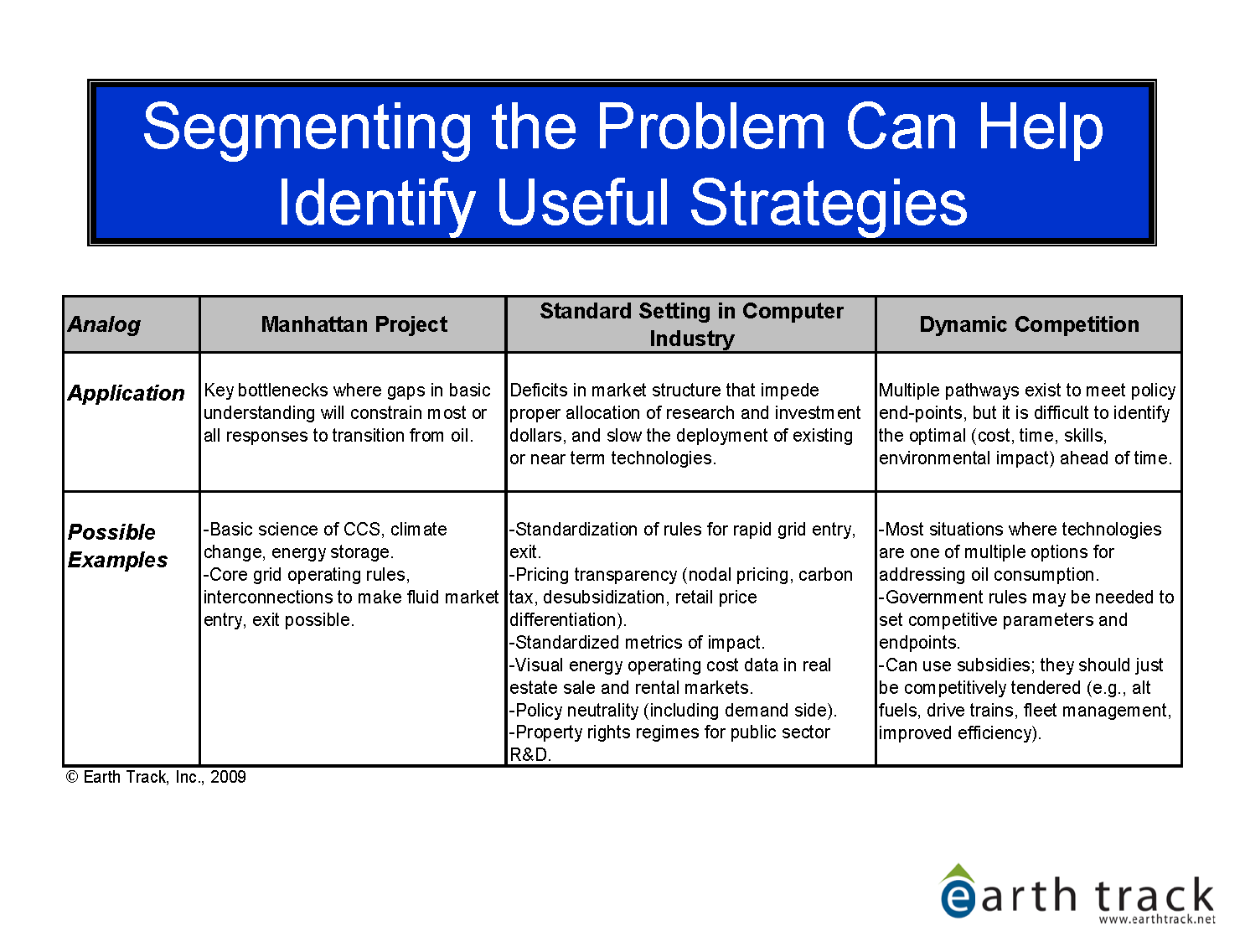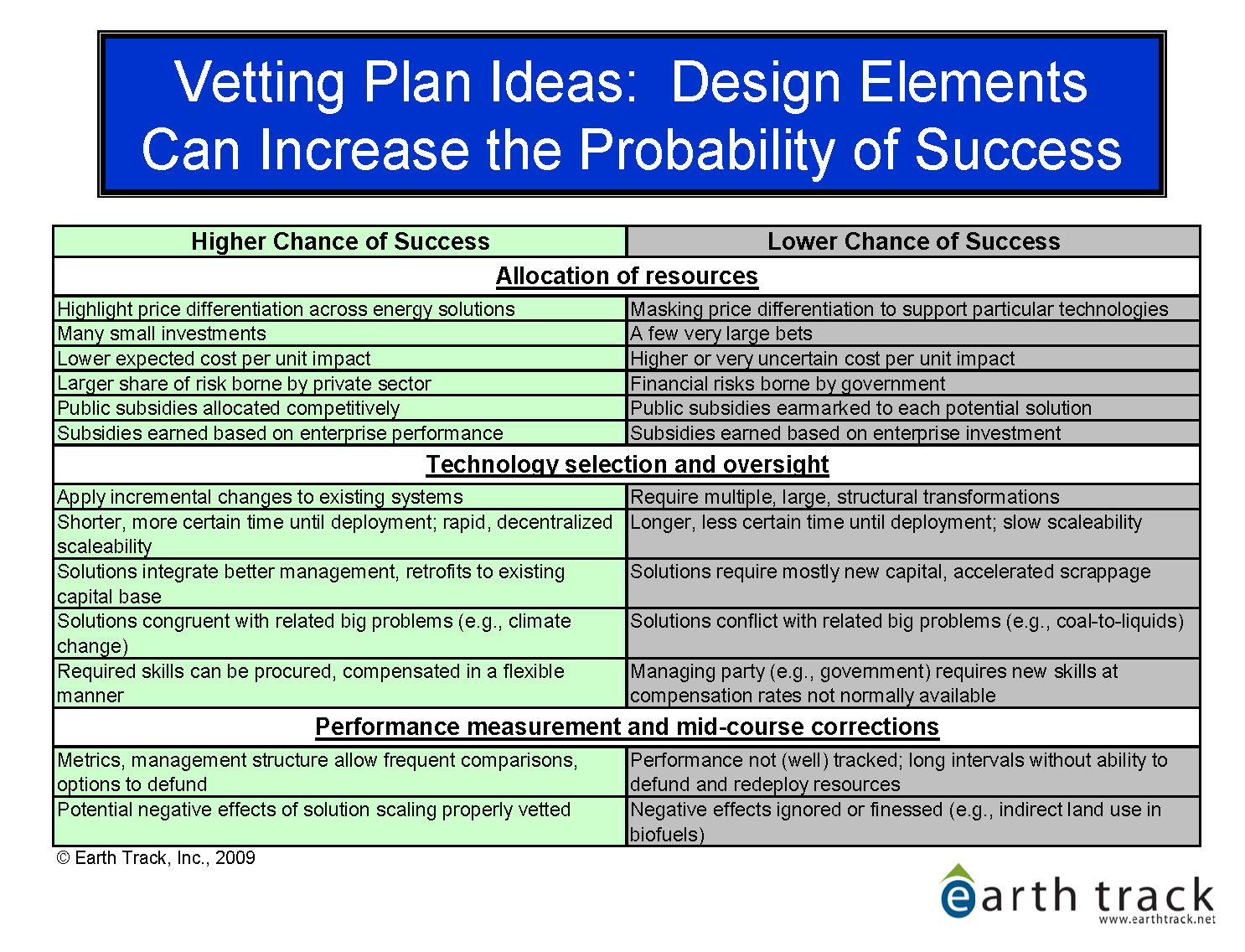To Build Back Better, pay attention to program design, incentives, and risk allocation
"Building Back Better" isn't just about what we fund; it is also about how we fund it. This holds true even for very important objectives such as decarbonizing our economy to address climate change risks. The slides below provide a concise overview of better ways to structure policies so that the incentives are more effectively aligned; limits of knowledge and power are properly reflected in the new programs being put into place; and progress or lack thereof can be detected more quickly to allow for government support and funding to be reprogrammed and redirected. With irreversible changes from problems such as climate change, it's not just wasted money that is a problem; it is also blowing our very limited response window.As an aside, these slides were developed and then refined for invited presentations at two different conferences: one for left-of-center groups and the other for right-of-center groups. Despite political differences, both sides shared a strong interest in achieving objectives of government in more efficient and more transparent ways. These events were the Oil Solutions Summit hosted by the Rocky Mountain Institute and the Brookings Institution in 2008, and Is Subsidizing Commercial Energy Projects the Best Way for America to Achieve it Energy Goals? hosted by the Heritage Foundation and the Nonproliferation Policy Education Center in 2009.



